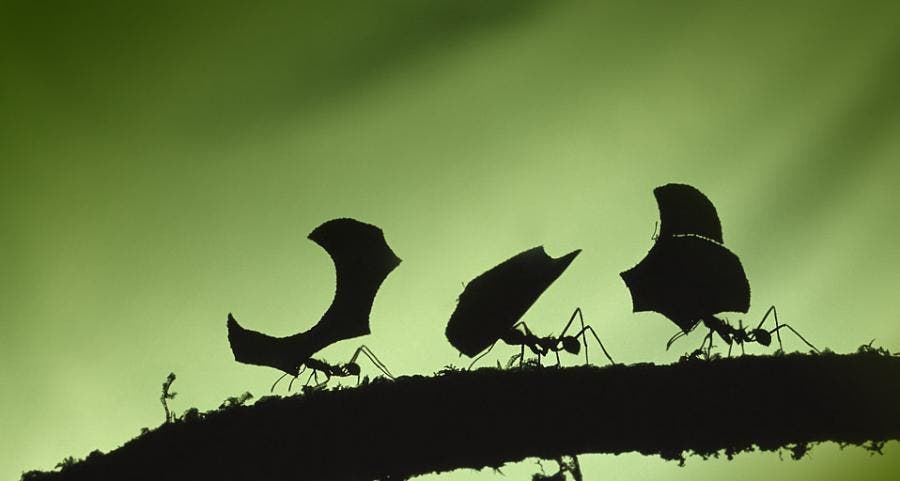A new Panama Smithsonian Tropical Research Institute (STRI) finds that modern relatives of the first fungus-farming ants still haven’t domesticated their crops. The study draws a strong parallel between the difficulties these ants faced and early human farmers faced.

Some time after the dinosaurs went extinct 60 million years ago, the ancestors of leaf-cutter ants decided it was time to settle down. Just like us, they traded hunting and gathering for a more secure source of food — agriculture. You can still see their legacy snaking in busy lines through the rainforest carrying bits and pieces of plants over their heads. All this material underpins a huge, almost industrial agricultural complex. But for all their hard work, the ants’ harvest is limited by a farmer’s worst nightmare — a wild crop.
A new study at the Smithsonian Tropical Research Institute (STRI) in Panama revealed that living relatives of the earliest fungus-farming ants still have not domesticated their crop, a challenge also faced by early human farmers.
Modern leaf-cutter ants and the fungus they grow can’t survive without each other. The fungus is so important to the ants that young queens take a bit of it from the home nest and the colony they establish revolves around the farms they set up from this tiny bit. The fungus, in turn, doesn’t have to waste energy producing spores to reproduce itself. But what if the fungus…wants to make spores?
“For this sort of tight mutual relationship to develop, the interests of the ants and the fungi have to be completely aligned, like when business partners agree on all the terms in a contract,” said Bill Wcislo, deputy director at the STRI and co-author of the new publication in the Proceedings of the National Academy of Sciences.
“We found that the selfish interests of more primitive ancestors of leaf-cutting ants are still not in line with the selfish interests of their fungal partner, so complete domestication hasn’t really happened yet.”
Humans harvest vegetables before they go to seed — at this stage, the plants start diverting most of their energy and nutrients towards producing seeds, thus limiting their value as foodstuffs. And just like us, ants want to make sure that the fungus puts as little energy as possible into growing spores so it will grow bigger and fatter. What ants want is for the fungus to grow hyphae, the thread-like protrusions which they can eat. But the crop has its own plan so the ants carefully starve it into doing what they want.
Marie Curie Post-Doctoral Fellow of Jacobus Boomsma’s lab at the University of Copenhagen Jonathan Shik and his team found in an STRI study of Mycocepurus smithii — an ancestor of the leaf cutters that has not yet domesticated its fungal crop — that the ants alter what they feed the fungus to limit its spore production. The ants carefully manage the protein and carbohydrate content of the fertilizer they use to control how many mushrooms their cultivars produce. When they fed it mulches rich in carbohydrates, the fungus can produce both hyphae and mushrooms. But carefully rationing the amount of protein it receives can prevent the fungi from making mushrooms.
The downside of this is that by starving their crops, the ants severely limit the output of their fungal cultivars.
“The parallels between ant fungus farming and human agriculture are uncanny,” Shik said. “Human agriculture evolved in the past 10,000 years.”
“It took 30 million years of natural selection until the higher attine ants fully domesticated one of their fungal symbiont lineages. We think that finally resolved this farmer-crop conflict and removed constraints on increased productivity, producing the modern leaf-cutter ants 15 million years ago,” Boomsma said.
“In contrast, it took human farmers relatively little time to domesticate fruit crops and to select for seedless grapes, bananas and oranges.”
The full paper titled “Nutrition mediates the expression of cultivar–farmer conflict in a fungus-growing ant” has been published in the journal PNAS.


